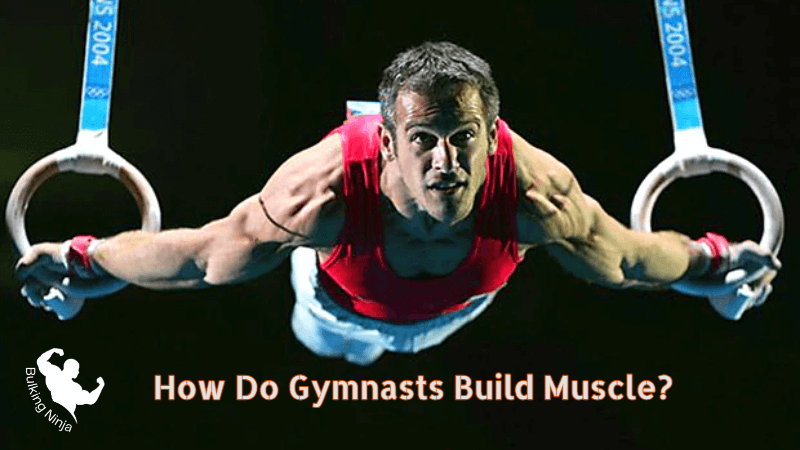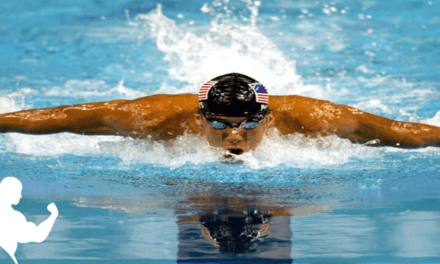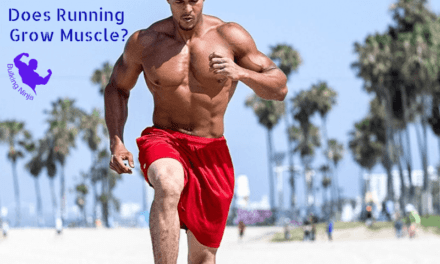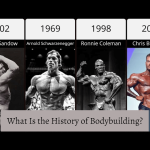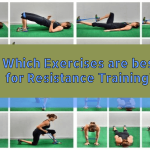When we think of gymnasts, we envision grace, flexibility, and jaw-dropping acrobatics. Yet, beneath those seemingly effortless performances lies a foundation of immense strength and muscle development.
How do gymnasts manage to achieve such remarkable muscularity without the bulk that often accompanies traditional bodybuilding routines? The answer unveils a world where strength meets artistry, where the physique is finely tuned for both aesthetics and function.
In this exploration of “How Do Gymnasts Build Muscle?” we will unravel the techniques, disciplines, and training methods that enable gymnasts to forge powerful, yet agile, bodies that defy conventional norms.
Whether you’re an aspiring gymnast or simply curious about the science behind these remarkable athletes, join us as we journey into the captivating realm of gymnastic muscle building.
Table of Contents
How Do Gymnasts Build Muscle?
Gymnasts are known for their incredible strength, agility, and graceful performances, and their muscle development plays a crucial role in achieving these feats.
However, the methods gymnasts employ to build muscle differ from traditional bodybuilding approaches. Rather than aiming for massive size, gymnasts focus on creating a balance between strength, power, and functional movement. This unique approach allows them to develop a lean and sculpted physique that is both aesthetically pleasing and highly functional for their sport.
In this article, we will delve into the strategies that gymnasts use to build muscle, exploring their training techniques, exercises, and the science behind their remarkable physiques. Whether you’re a gymnastics enthusiast or simply intrigued by innovative fitness methods, join us as we uncover the secrets of how gymnasts build muscle.
Gymnastics Help To Gain Muscles

Most people envision weightlifting, resistance training, and high-intensity workouts. However, there’s a hidden gem in the world of fitness that often gets overlooked – gymnastics. Beyond the graceful routines and impressive displays of flexibility, gymnastics is a powerhouse when it comes to building muscle mass and achieving remarkable strength gains.
The Anatomy of Gymnastics Muscle Gain
Gymnastics is not only about artistic movements and coordination; it demands an exceptional level of strength, control, and functional fitness. Gymnasts rely heavily on their own body weight for resistance, which naturally leads to muscle engagement and development.
Movements like handstands, pull-ups, muscle-ups, and parallel bar work require substantial upper body and core strength. These exercises not only enhance muscle mass but also promote balance, coordination, and overall body control.
Functional Strength and Muscle Activation
Unlike traditional weightlifting that often isolates specific muscle groups, gymnastics involves compound movements that engage multiple muscle groups simultaneously.
This functional approach leads to a more balanced and functional physique. For instance, performing exercises like the planche or the iron cross requires intense core engagement, resulting in not only defined abs but also enhanced overall stability.
Isometric Contractions and Muscle Endurance
Gymnastics often involves isometric contractions, where muscles are contracted without changing their length. This unique form of training develops muscle endurance – the ability to sustain muscle contractions over extended periods. Holding positions like the L-sit or the front lever challenges muscles to maintain tension, contributing to endurance and overall muscle development.
Bodyweight Mastery and Progressive Overload
Gymnastics practitioners follow a progressive approach, gradually advancing from basic movements to complex feats of strength. This concept of progressive overload is key to muscle growth, as it challenges muscles to adapt and grow stronger over time. As you master movements and progress to more advanced variations, you continually stimulate muscle development.
Incorporating Gymnastics into Your Routine
Incorporating gymnastics into your fitness regimen doesn’t mean you have to become an Olympic-level gymnast. You can start with basic bodyweight exercises like push-ups, pull-ups, and dips, then gradually introduce more challenging movements as you progress.
Many fitness centers offer gymnastics-inspired classes or open gym sessions where you can learn and practice these skills under the guidance of experienced coaches.
How Do Gymnasts Get Big Legs?
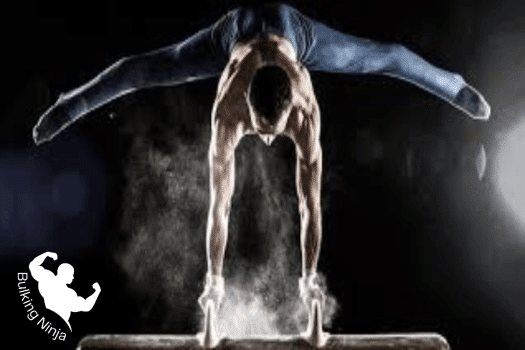
Gymnasts are renowned for their incredible strength, agility, and grace. When you watch them perform jaw-dropping routines on various apparatuses, it’s hard to miss their well-defined, powerful legs. While gymnastics may not appear to focus solely on lower body development, the truth is that gymnasts possess some of the most impressive leg muscles in the fitness world
Gymnastics is built on the foundation of bodyweight exercises. Movements like squats, lunges, jumps, and various leg lifts are integrated into gymnasts’ routines. These exercises activate multiple leg muscles at once, fostering overall leg strength and muscle development.
Plyometric exercises, also known as “jump training,” are a staple in gymnastics training. These explosive movements, like box jumps and tuck jumps, engage fast-twitch muscle fibers and contribute to leg muscle growth. The rapid and forceful contractions involved in plyometrics build strength and power, resulting in the development of bigger leg muscles.
Gymnastics demands the ability to hold static positions, and this extends to leg muscles as well. Moves like the squat hold, pistol squat, and various balance poses require isometric contractions of leg muscles, promoting muscle endurance and growth. Holding these positions for extended periods under tension stimulates muscle development. Read more about limite to Build muscles.
Gymnasts execute dynamic movements that engage the legs throughout the full range of motion. For instance, swinging on the uneven bars or performing tumbling passes requires powerful leg contractions. These dynamic motions work the muscles through various angles, leading to comprehensive leg development.
Gymnasts train on a variety of surfaces and apparatuses, from floor mats to balance beams. This diversity challenges leg muscles in different ways, enhancing stability, balance, and strength. Training on uneven surfaces forces leg muscles to engage more deeply, leading to greater muscle recruitment and growth. read more about wrestling good for gain muscles.
Gymnasts follow structured training programs that incorporate consistency and periodization. They progressively increase the intensity and complexity of leg-focused exercises over time. This gradual overload principle stimulates muscle adaptation and growth, ultimately contributing to the development of bigger leg muscles.
Gymnasts possess awe-inspiring leg muscles that result from a combination of bodyweight training, explosive plyometrics, isometric holds, dynamic movements, and a structured training approach. While gymnastics training might not be feasible for everyone, incorporating elements of their training into your routine can yield remarkable leg muscle development.
By embracing bodyweight exercises, plyometrics, and a well-structured plan, you can unlock the potential to build strong, well-defined legs that not only enhance your athleticism but also leave you feeling empowered and confident in your own skin.
What muscles works in Gymnastics?
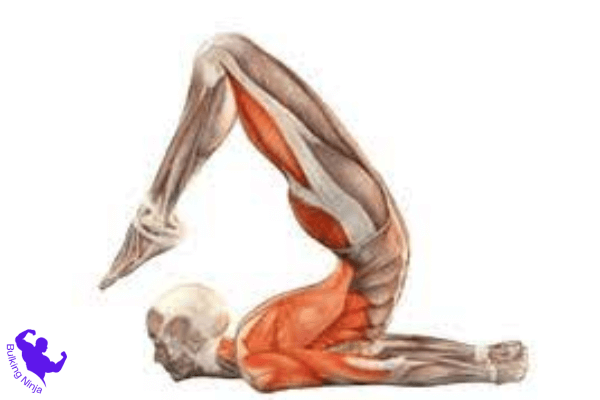
Gymnastics is a comprehensive discipline that engages a wide array of muscles throughout the body. The nature of gymnastics involves performing various dynamic and static movements that challenge strength, flexibility, coordination, and balance. Here are some of the key muscle groups that gymnastics targets:
Core Muscles
Gymnastics heavily relies on core strength for stability and control during movements. Muscles like the rectus abdominis, obliques, and transverse abdominis are engaged during exercises such as hanging leg raises, L-sits, and various static holds.
Upper Body Muscles
Many gymnastics movements involve supporting and propelling the body using the upper body. Muscles worked include the latissimus dorsi, trapezius, deltoids, biceps, and triceps. Pull-ups, muscle-ups, handstands, and parallel bar work are prime examples of exercises that target these muscles. Further more study about Best easy high protien Breakfast for Grow Muscle.
Leg Muscles
Despite the focus on upper body strength, gymnastics engages the leg muscles as well. Squats, jumps, leaps, and various leg lifts work the quadriceps, hamstrings, calves, and hip flexors.
Back Muscles
The muscles of the back, such as the erector spinae and rhomboids, play a crucial role in maintaining posture and spinal alignment during movements and holds. further study about karate can help for building muscles.
Shoulder Muscles
The shoulder girdle is heavily involved in gymnastics, especially during movements that require overhead pressing and supporting the body weight. The deltoids, rotator cuff muscles, and serratus anterior are all engaged.
Forearm and Grip Muscles
Gymnastics requires a strong grip and forearm endurance for exercises like hanging, swinging, and gripping apparatuses. The forearm muscles and grip strength are vital for maintaining control.
Hip Muscles
Hip flexors, glutes, and hip adductors are engaged in various movements like leg lifts, splits, and jumps. Strong hip muscles contribute to overall lower body stability and flexibility.
Hamstrings and Hip Extensors
Movements like backflips, pike compressions, and tucks engage the hamstrings and glute muscles for explosive power and control.
Chest Muscles
Chest muscles, specifically the pectoralis major and minor, are worked during exercises that involve pushing movements, such as planche work, push-ups, and handstand push-ups.
Calves
Calves are engaged during jumping and landing movements, contributing to lower body power and stability.
Gymnastics encompasses a holistic approach to training, engaging both major and stabilizer muscles across the body. The combination of dynamic movements, static holds, and bodyweight exercises in gymnastics training leads to a well-rounded and functional development of muscles. Study more about who is better Gym or Martial arts for grow muscles.
What Are The Benefits Of Gymnastics?

Gymnastics offers a range of unique benefits for gaining muscle mass and strength. While it may not be the conventional approach to muscle building like weightlifting, it provides distinct advantages that contribute to overall muscle development. Here are some key benefits of gymnastics for gaining muscles:
Full-Body Engagement
Gymnastics is a comprehensive discipline that engages various muscle groups throughout the body. From upper body to core to lower body muscles, gymnastics movements require coordinated effort from multiple muscle groups, leading to balanced muscle development.
Bodyweight Resistance
Gymnastics relies heavily on bodyweight exercises, which provide a different form of resistance compared to traditional weightlifting. This type of resistance promotes functional strength and helps develop lean muscle mass. Further Read more about gain muscles with Badminton.
Compound Movements
Many gymnastics movements are compound exercises, meaning they involve multiple joints and muscle groups. This leads to efficient muscle activation and growth as compared to isolation exercises. Study more about Bulking or Cutting.
Strength-to-Weight Ratio
Gymnasts exhibit exceptional strength-to-weight ratios due to their impressive body control and relative strength. This means that as you develop strength through gymnastics, you’re also enhancing your ability to move your own body weight efficiently, which can contribute to muscle growth.
Functional Strength
Gymnastics movements focus on functional strength, which is strength that translates to real-life movements and activities. This type of strength enhances overall athleticism and muscular coordination. Study more about can bouldering grow muscles.
Isometric Contractions
Many gymnastics poses and holds involve isometric contractions, where muscles are engaged without changing length. Isometric contractions build endurance and contribute to muscle definition and growth.
Flexibility and Mobility
Gymnasts often work on flexibility and mobility, which can aid in muscle growth. Enhanced range of motion allows for more effective muscle engagement and contributes to overall muscle balance.
Neuromuscular Adaptation
Gymnastics requires precise coordination and control, leading to improved neuromuscular connections. This enhances muscle recruitment and can lead to greater muscle development.
Aesthetic Muscular Development
Gymnastics training promotes a lean and toned physique due to the combination of muscle development and bodyweight movements. This can lead to a balanced and aesthetically pleasing muscular appearance.
Mental Discipline
Gymnastics demands mental focus, discipline, and determination. This mindset extends to training intensity and consistency, both of which are crucial for effective muscle gain.
Progressive Overload
Gymnastics follows a structured approach to training that incorporates progressive overload – gradually increasing the intensity and complexity of movements. This stimulates muscle adaptation and growth over time.
Core Strength
Many gymnastics movements require exceptional core strength. A strong core provides a solid foundation for overall muscle development and contributes to improved posture and stability.
Incorporating elements of gymnastics into your fitness routine can provide you with a well-rounded approach to muscle gain. Whether you’re a gymnastics enthusiast or looking to diversify your training, the combination of bodyweight exercises, compound movements, and functional strength training can yield impressive results in terms of muscle growth, definition, and overall athletic prowess.
Frequently Asked Questions
How Do Gymnasts Build So Much Muscle?
Gymnasts build muscle through a combination of bodyweight exercises, compound movements, progressive overload, and functional strength training. Their rigorous training routines engage multiple muscle groups, leading to balanced and well-defined muscle development.
Can You Gain Muscle With Gymnastics?
Yes, you can gain muscle through gymnastics. Gymnastics involves bodyweight exercises, dynamic movements, and isometric holds that challenge muscles, leading to muscle growth and increased strength.
How Do Gymnasts Get Their Physique?
Gymnasts achieve their physique through a combination of rigorous training, bodyweight exercises, dynamic movements, and disciplined nutrition. Their training routines focus on strength, flexibility, and control, resulting in a lean, muscular, and well-defined physique.
How Do Gymnasts Get Such Big Arms?
Gymnasts develop big arms through a combination of bodyweight exercises, dynamic movements, and isometric holds that engage the muscles in their arms extensively. Movements like pull-ups, muscle-ups, handstands, and various apparatus work challenge the biceps, triceps, and forearm muscles, leading to muscular development in the arms.
Why Are Female Gymnasts So Muscular?
Female gymnasts are muscular due to their intensive training routines that focus on strength, power, and body control. Gymnastics involves bodyweight exercises, dynamic movements, and isometric holds that engage various muscle groups. The high training volume and intensity, combined with proper nutrition, contribute to the development of lean and defined muscles in female gymnasts.
Do Gymnasts Lift Heavy?
Gymnasts typically don’t lift heavy weights in the same way that traditional weightlifters or bodybuilders do. Their training primarily focuses on bodyweight exercises, dynamic movements, and gymnastics-specific apparatus work. While they may use resistance bands, medicine balls, and occasionally light weights for conditioning, their emphasis is on developing strength, power, and control using their own body weight and specialized equipment.
Conclusion
In conclusion, gymnastics emerges as a remarkable avenue for those seeking to gain muscles and build strength in a unique and holistic way. The intricate blend of bodyweight exercises, dynamic movements, and isometric holds challenges muscles from various angles, leading to comprehensive muscle development. Gymnasts embody not only impressive physical prowess but also the mental discipline and determination required for consistent training.
While gymnastics training may not align with traditional muscle-building methods, its effectiveness in sculpting lean, functional, and aesthetically pleasing muscles is undeniable. Whether you’re an aspiring gymnast or someone looking to diversify their fitness routine, embracing the principles of gymnastics can unlock a path to not only stronger muscles but also enhanced agility, balance, and overall athleticism.
So, consider adding elements of gymnastics to your training regimen and embark on a journey that transcends conventional boundaries to foster a stronger, more dynamic you.
